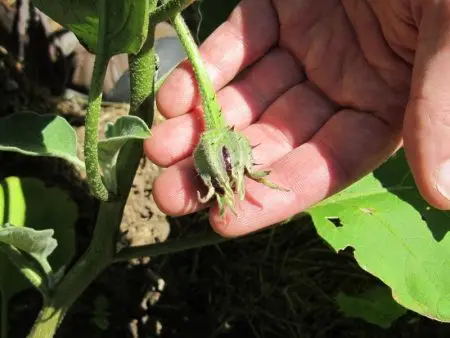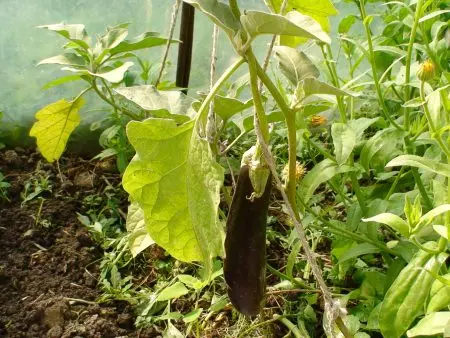Contents
Pasynkovanie eggplant is a very important step in the process of cultivating these vegetables. The pinching procedure consists in removing part of the leaves or shoots in order to obtain large fruits and a higher yield. The formation of a bush is especially important for eggplant grown in a greenhouse. Constantly being in conditions of high temperature and humidity, greenhouse plants intensively increase their green mass, and this does not have the best effect on the amount of the crop.
The need for a procedure
It should be said right away that pinching is not a prerequisite for obtaining a good harvest of eggplant. Plants may not need this procedure in two cases:
- if they are grown in open ground – in this case, the leaves are left so that they prevent the soil from drying out in hot weather, besides, under the scorching sun, the bushes do not grow very intensively;
- if the eggplant variety is undersized, the bushes of such eggplants, as a rule, are able to form independently.

In other cases, it is necessary to remove leaves and extra shoots on the bushes. This is due to the fact that most varieties of eggplant form quite voluminous and strongly leafy bushes. At the base of the petioles of the leaves, located on the main stem, young shoots (stepchildren) constantly strive to grow. If they are not removed in time, the eggplant bushes will become tall and multi-stemmed, and all the power of the plant will be directed to the growth of green mass to the detriment of the fruits – the ovaries will not have time to ripen, and will simply fall off.
As for greenhouse eggplant varieties, almost all of them need pinching. However, if they are grown in a greenhouse where temperature and humidity can be controlled, there is no urgent need for this procedure. For greenhouse vegetables, pinching makes sense only when you need to get large fruits, since a plentiful harvest in a good greenhouse is already provided.
If greenhouse eggplants are provided with full care, proper watering, but the temperature is not regulated, then conditions of high humidity are created in the greenhouse. In such an environment, eggplants grow more intensively, and in order to stop growth and force the plant to bush, you need to not only cut off the leaves and side shoots, but also pinch (cut off) the top of the bush. Otherwise, the stem will stretch, become weak, and accordingly, there will be few fruits on it. These manipulations should be carried out before the appearance of buds on eggplant.

Also, pinching eggplant in a greenhouse can be carried out in order to accelerate the ripening of the crop after the formation of the ovary, and even during the fruiting period. In this case, the growth of the bush will stop, and the plant will direct all its forces to the ripening of vegetables. It is also advisable to cut off newly appeared inflorescences. Proper pinching allows you to control and direct the flow of nutrients from the roots to the ovary, and thus influence the size of the fruit.
The same procedures are done with tall eggplants, which are grown in open ground. If the bushes grow intensively, and there are few or no ovaries, the only thing that can help in such a situation is pinching the top and removing the lower shoots.
Many vegetable growers prefer to plant undersized eggplants in open ground. Such varieties have certain advantages – easier care, no need for tying and pinching. Bushes of low-growing eggplants form naturally, and nutrients in all parts of the plant are redistributed on their own, so they do not need to be pinched.
Preliminary work
Regardless of where the eggplant is grown: in a greenhouse or open ground, the bushes should first be tied up before the pinching procedure. This is due to the fact that tall stems under the weight of ripening fruits can bend, and even break, besides, removing excess shoots also helps to weaken the trunks.
For plants in a greenhouse, the ideal option would be to stretch the wire over the bushes along the planting, to which the stems are then tied with twine, or to install a trellis. For bushes in the open field, a trellis or the installation of long stakes is suitable. You need to install such supports very carefully, trying not to damage the roots.

Each plant must be tied up in several places below the branching of the stem, since this place is considered the most vulnerable. If it is not possible to stretch a rigid wire in the greenhouse, then stakes can be used as a support, however, it must be borne in mind that a shadow forms under the shelter from the stakes, which is fraught with the growth of fungal flora on the trunks. For eggplant in the open field, this is not a problem, since the bed is usually illuminated by the sun from all sides.
Video “Growing eggplant and peppers”
In this video, you will learn about a number of subtleties when growing peppers and eggplants.
How to stepson correctly
The procedure itself is carried out in the interval of 14-20 days from the day the seedlings are planted in the soil. You can wait up to twenty days if the plants are weak and do not take root well, but for strong, well-established seedlings, 14-15 days from planting will be optimal, since you need to have time to pinch before the buds appear.
It should immediately be clarified that pinching is desirable to carry out by hand. All shoots and leaves growing below the main branch must be removed. If eggplant bushes grow in the garden, and it is not possible to provide the necessary care and watering, the lowest leaves can be left to shade the roots and prevent the soil from drying out.
Pinch eggplants should be no earlier than a month before the end of the growing season. This will stop the growth of the stems, and send all the nutrients to the ovary. However, if the green mass grows too intensively – this happens at high humidity during a period of heavy rainfall, you can pinch off the top even earlier.

Experienced vegetable growers use various schemes for the formation of bushes: in one stem, or several stems. If vegetables are grown in a small greenhouse, then the first option – in one stem, will be the most optimal, since it saves usable area and space. This scheme assumes that when the plant reaches a height of 30 cm, all additional shoots are plucked off from it and only one stem remains.
The “multi-stalk” scheme is more efficient because it allows you to get a higher yield. Following it is no more difficult than the previous one, only 2-3 more shoots should be left in addition to the main stem. All lower shoots and foliage located below the main branch are removed. Such a scheme is acceptable both for vegetable crops in the greenhouse and for those that grow in the garden.
At this stage, eggplants need constant care. On the side shoots, young shoots will regularly grow, which should be pinched off as they appear. When forming a bush, it must be remembered that there should be one ovary on each stem. As for undersized bushes, they do not need pinching, however, with a large amount of foliage, it can simply be thinned out. Adjustment of the bush of low-growing crops is carried out only after the formation of the ovary.
Video “Eggplant care. Pasynkovanie”
The author of this video will tell and show how to stepchild eggplants correctly.









